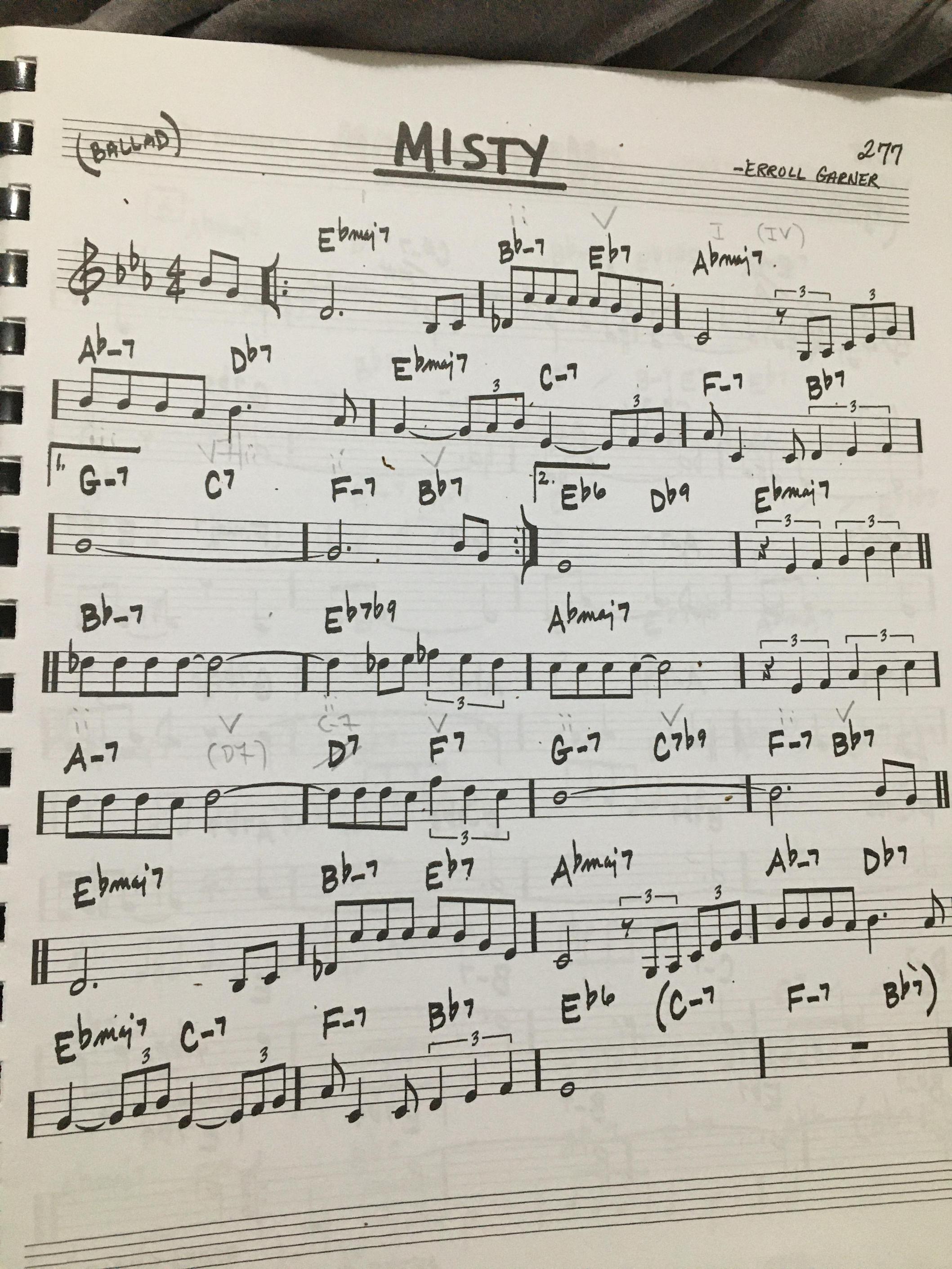I am getting into Jazz harmonic analysis, and have watched a few analysis videos to start me off. I will be referring to the analysis that one youtuber (Justinguitarsongs) has made of the tune 'Misty', by Erroll Garner. I have posted a photo of the song, with Roman numerals pertaining to the sections in question.
Bars 2 and 3
ii-V-I in A flat M. A flat M is also acting as the IV chord in E flat M. Despite its IV function, the Eflat7 is not described as a secondary dominant chord leading to IV (V7/IV). Is this because the ii-V-i cadence is seen as a key change?
Bars 7/8 (first time bar)
Here, we have a ii V in F linking with a ii V in E flat. This time, the dominant chord IS described as a secondary dominant chord. Is this because the G-7 that precedes it is part of the key? (chord iii).
Bars 13-16
(for this one, justinguitar made a couple of alterations to the Real Book harmony, as he believed it to be a more accurate representation of the harmony- this can be seen in pencil (A-7-D7, C-7-F7, G-7- C7, F-7, Bflat7).
Here, we have a bunch of interlinking ii-V progressions. The first being in G, then B flat, then F, then E flat. Do these count as modulations, even though they are incomplete? The C-7- F7-G-7 can be seen as a back door progression in G minor, but the G minor itself is the ii chord in F, so it doesn't really 'arrive' in that key.
I also do not understand the relationship between the first two in this sequence (A-7 -D7-- C-7-F7)?
so in short:
ii-V-I cadences: These are seen as modulations, even if the I chord is in key ( and as long as the ii chord isn't in key, otherwise the V is seen as a secondary dominant)?
interlinking ii-V cadences: these are not complete modulations until they resolve? (even arriving at i chord does not count as a modulation if it is also the ii chord of the next ii-V?)
Many thanks for any time spent on this!
Ed


